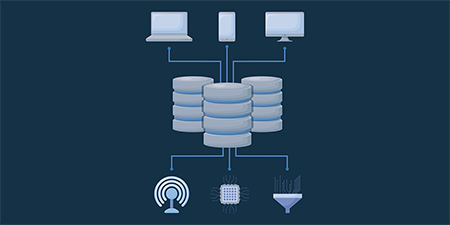Creating a MySQL Cluster involves setting up a distributed database system that provides high availability, scalability, and fault tolerance.
MySQL Cluster, also known as MySQL NDB Cluster, employs a shared-nothing architecture where each node in the cluster manages its own data and communicates with other nodes to ensure data consistency and redundancy. Here's a general guide on how to set up a MySQL Cluster:
Prerequisites:
- Hardware Requirements: You need multiple servers to set up a MySQL Cluster. Each server should have enough resources (CPU, RAM, Disk Space) to handle the expected workload.

- Network Setup: Ensure that all servers in the cluster can communicate with each other over the network. Low-latency and high-bandwidth connections are preferable.
- MySQL Cluster Software: Download and install the MySQL Cluster software from the official MySQL website.
Steps to Create a MySQL Cluster:
-
Install and Configure MySQL Cluster Software:
Install MySQL Cluster software on each server in the cluster.
Configure the MySQL Cluster management server (ndb_mgmd) by specifying the configuration file (config.ini) that defines the cluster's structure, including the management node, data nodes, and SQL nodes. -
Set Up Management Node (ndb_mgmd):
Choose one server to act as the management node.
Start the management node daemon (ndb_mgmd) with the specified configuration file. -
Set Up Data Nodes (ndbd):
Choose one or more servers to act as data nodes.
Install MySQL Cluster software on each data node server.
Configure the data node daemon (ndbd) using the configuration file.
Start the data node daemon on each data node server. -
Set Up SQL Nodes:
Choose one or more servers to act as SQL nodes.
Install MySQL Server software on each SQL node server.
Configure the MySQL Server instance to use the MySQL Cluster storage engine (NDBCLUSTER).
Start the MySQL Server instances on each SQL node server. -
Configure and Start MySQL Cluster:
Update the configuration file (config.ini) on the management node to include the IP addresses and ports of all nodes in the cluster.
Start the management node daemon (ndb_mgmd) with the updated configuration file.
Verify that all nodes (management node, data nodes, and SQL nodes) are connected and operational. -
Testing and Monitoring:
Run tests to ensure that data is distributed and replicated across data nodes correctly.
Monitor the cluster's performance, resource utilization, and health using MySQL Cluster management tools and utilities. -
Scaling and Maintenance:
As your application workload grows, you can scale the MySQL Cluster by adding more data nodes or SQL nodes to distribute the load and improve performance.
Perform regular maintenance tasks such as backup and recovery, software updates, and configuration tuning to ensure the stability and reliability of the MySQL Cluster.
Conclusion:
Setting up a MySQL Cluster requires careful planning, configuration, and testing to ensure that the cluster meets your performance, availability, and scalability requirements. By following the steps outlined above and leveraging the capabilities of MySQL Cluster, you can build a robust and resilient database infrastructure to support your applications and business operations.
If you like the article and in need fo such a service, please dont hesitate to contact us



